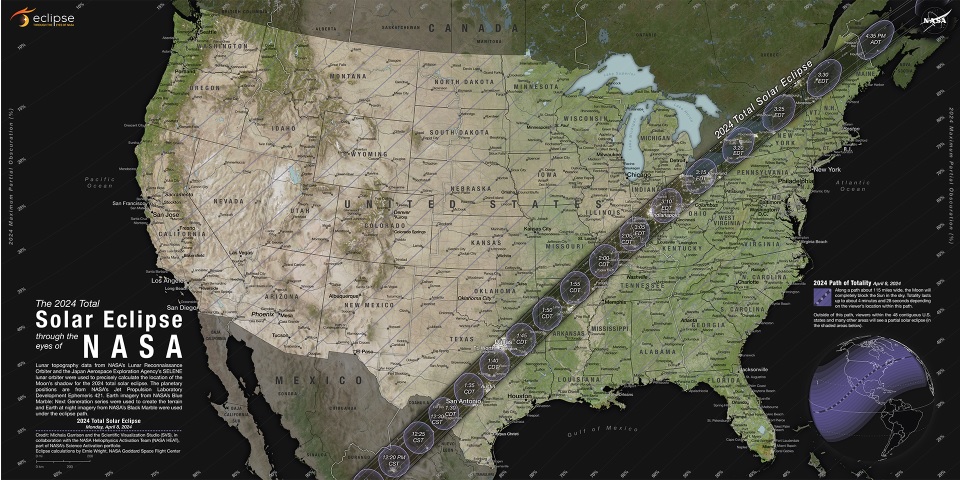by WorldTribune Staff / 247 Real News April 7, 2024
Monday's total solar eclipse will offer “incredible scientific opportunities,” NASA Deputy Administrator Pam Melroy told a press conference about the celestial event.
The eclipse will begin in the U.S. on Monday afternoon. It will first be visible as a partial eclipse at 12:06 p.m. CDT near Eagle Pass, Texas, before progressing to totality by about 1:27 p.m. CDT and progressing along its path to the northeast. All of the contiguous 48 states will be able to view at least a partial eclipse.
Outside the path of totality observers may spot a partial eclipse, where the moon covers some, but not all, of the sun, according to NASA. The closer you are to the path of totality, the larger the portion of the sun that will be hidden.
NASA allows viewers to input a ZIP code and see how much of the sun will be covered in their location.
Researchers are excited about the Sun being near the peak of its 11-year cycle.
“The chance we’re going to see something amazing is very high,” Melroy said.
The major decrease in sunlight provoked by the eclipse — more rapid and localized than a simple sunset — should allow researchers to learn more about how light affects the ionosphere so they can better predict potential problematic disruptions, NASA said.
 The total solar eclipse will be visible along a narrow track stretching from Texas to Maine on April 8, 2024. A partial eclipse will be visible throughout all 48 contiguous U.S. states. To download this map and view other versions click here.
The total solar eclipse will be visible along a narrow track stretching from Texas to Maine on April 8, 2024. A partial eclipse will be visible throughout all 48 contiguous U.S. states. To download this map and view other versions click here.Source link

